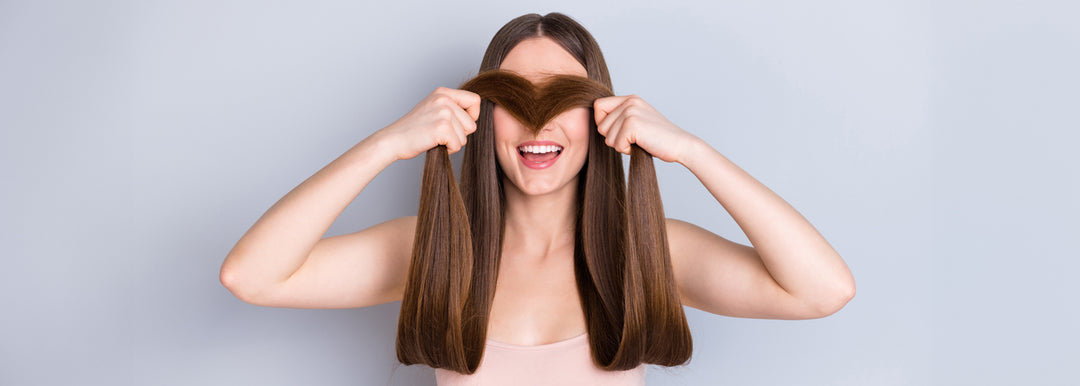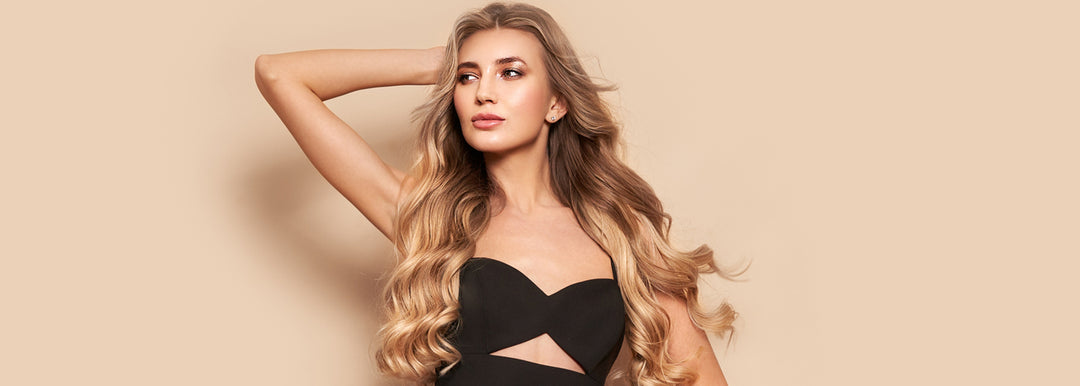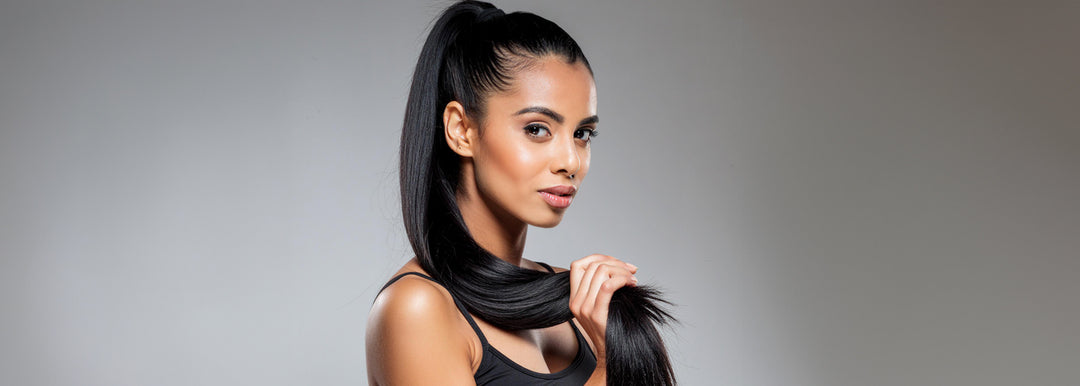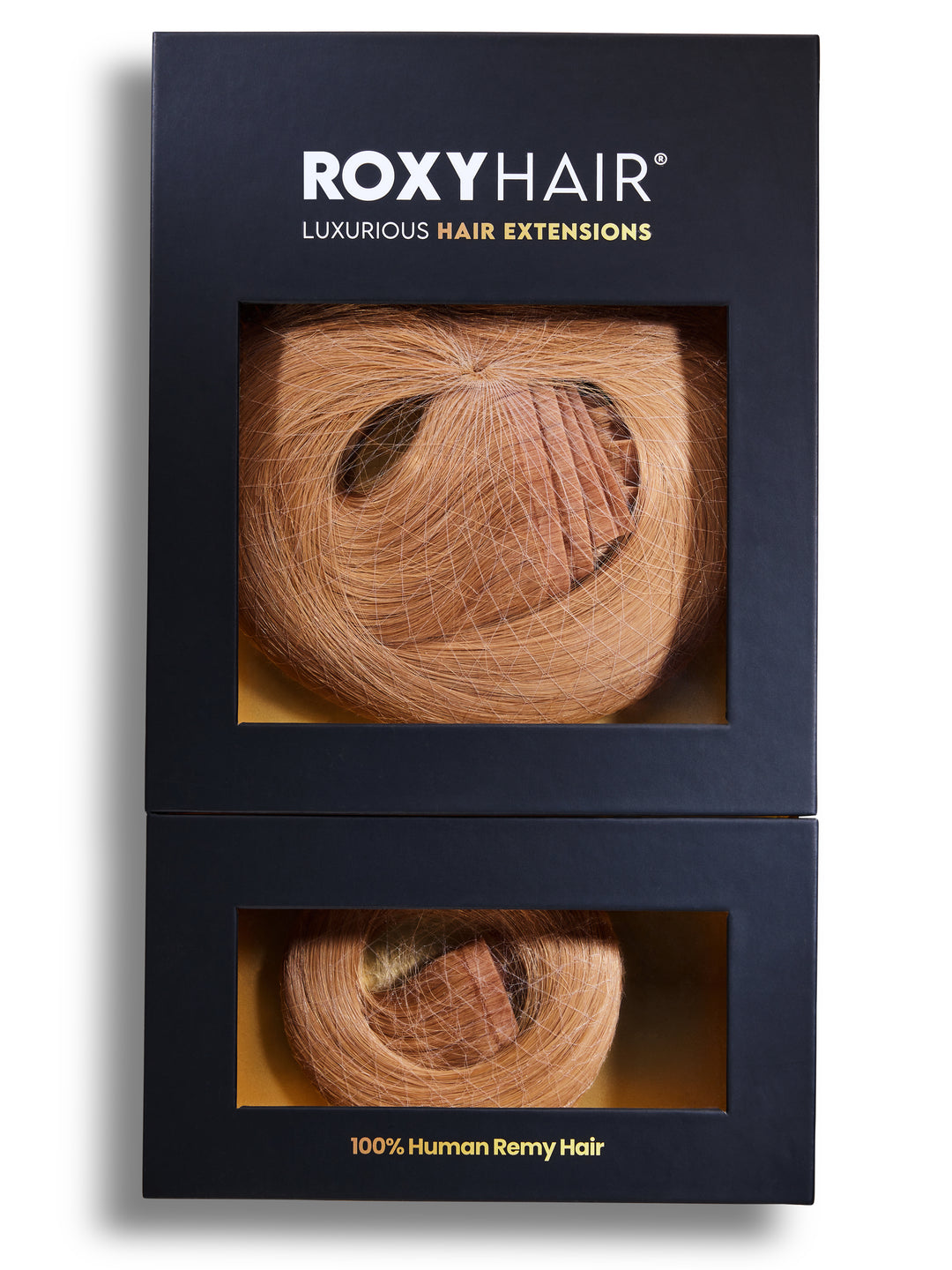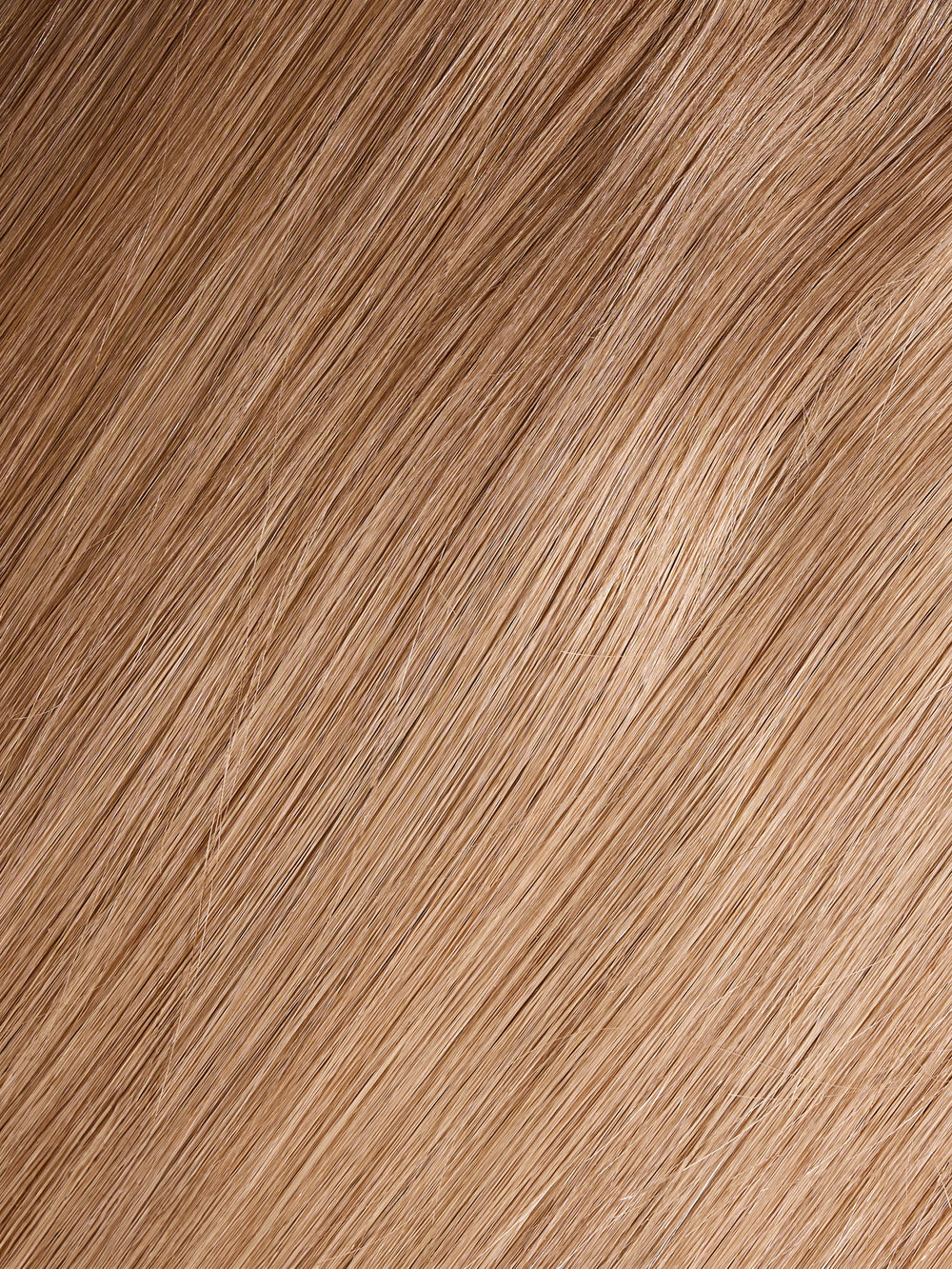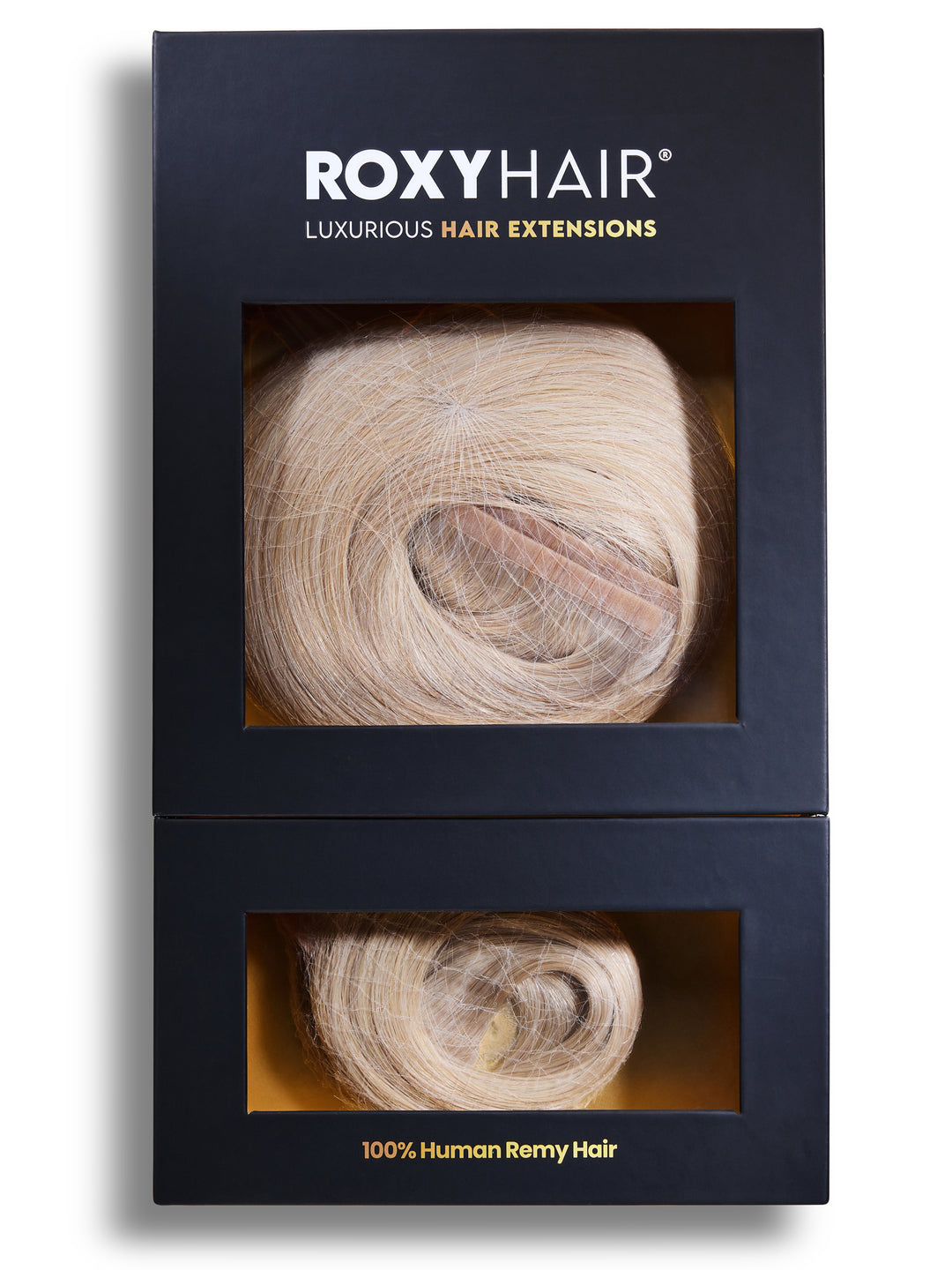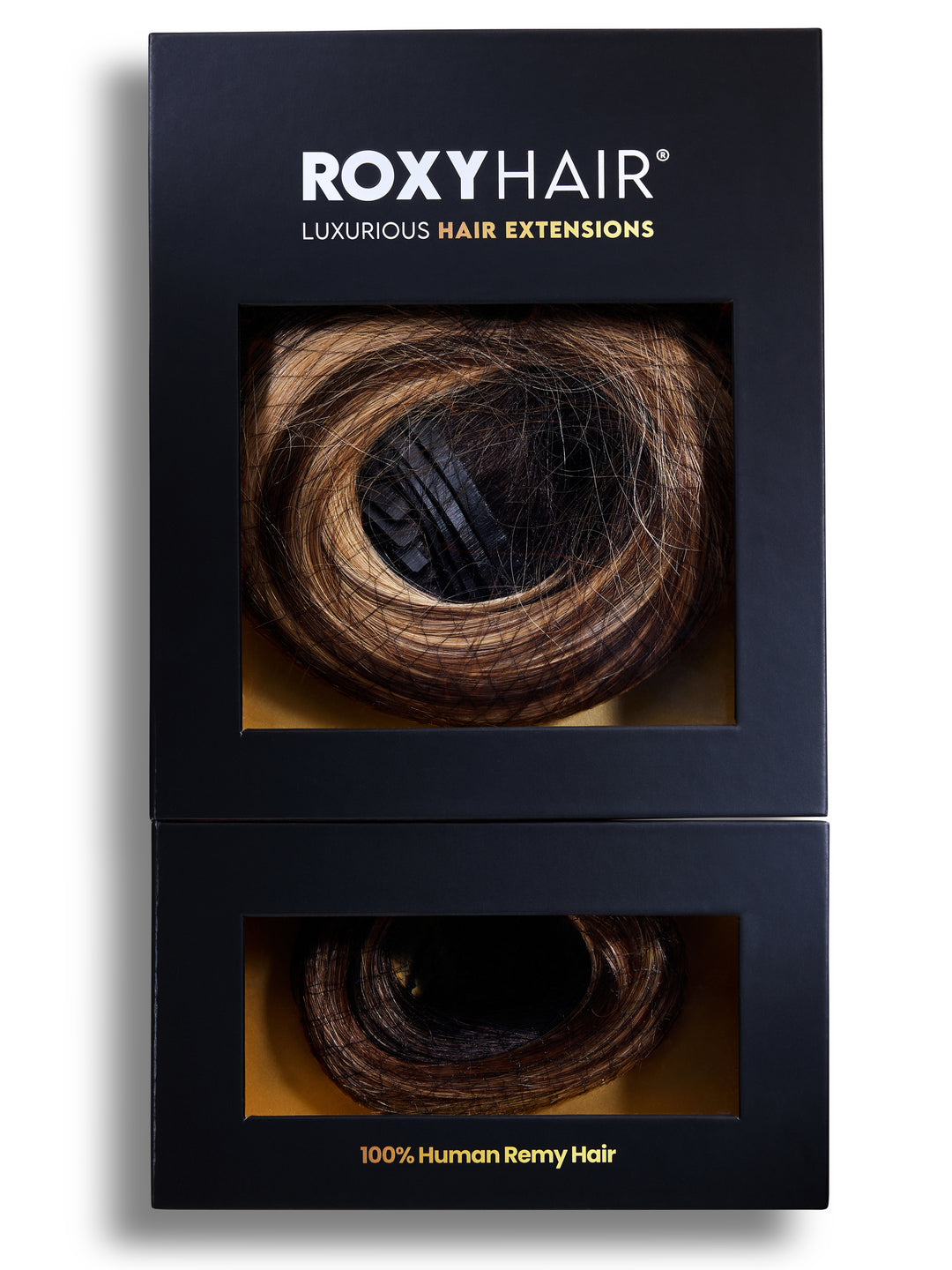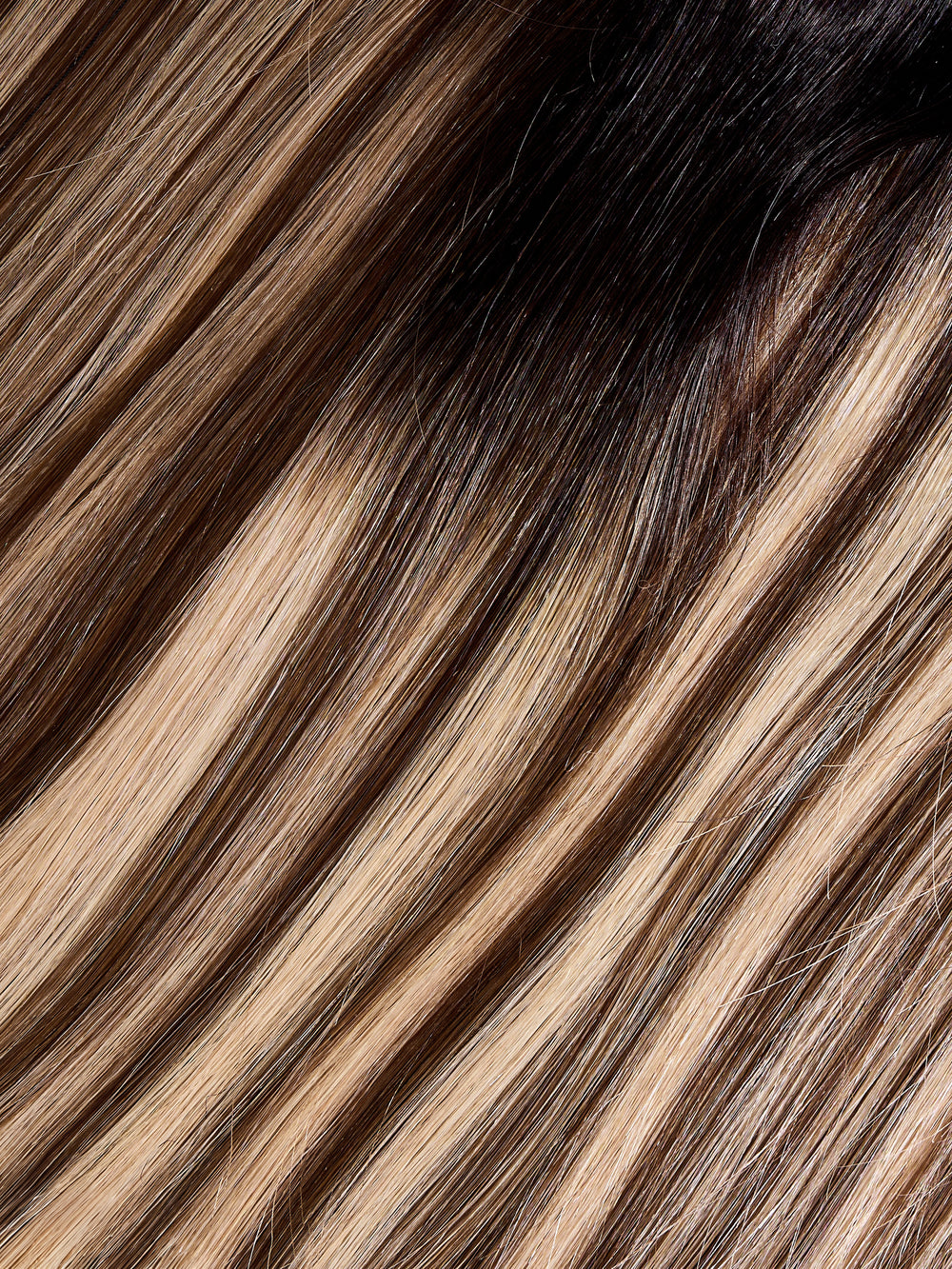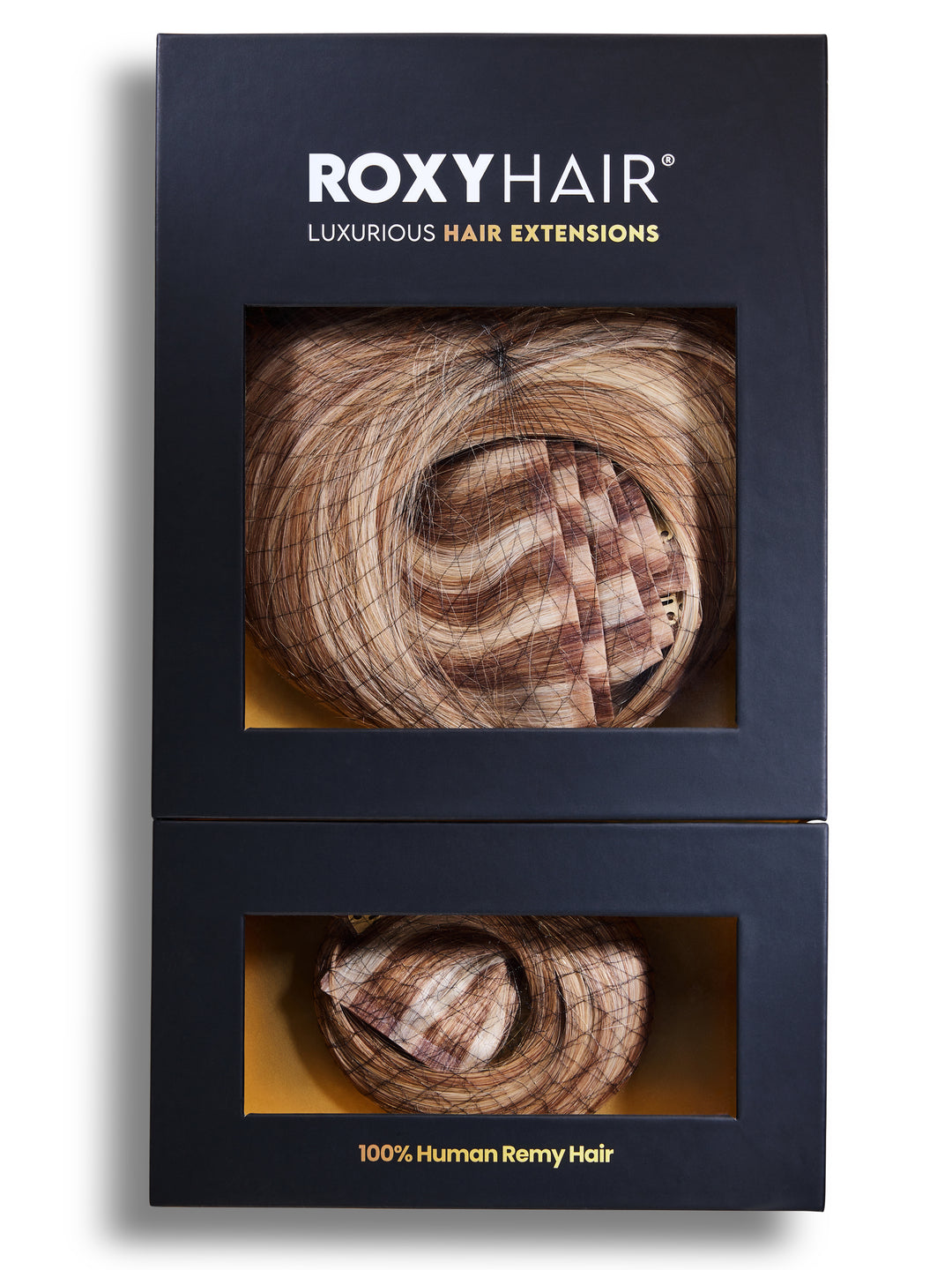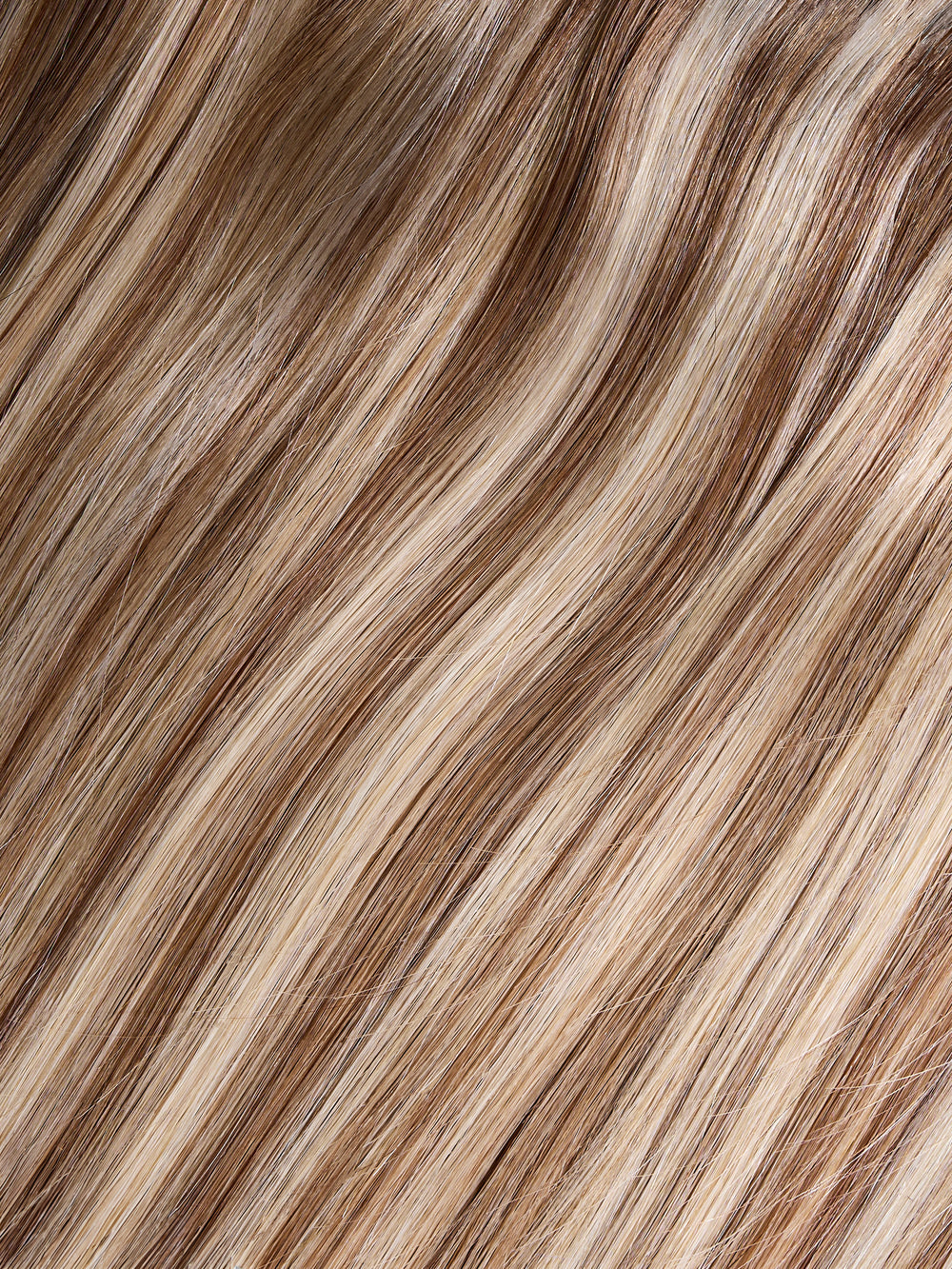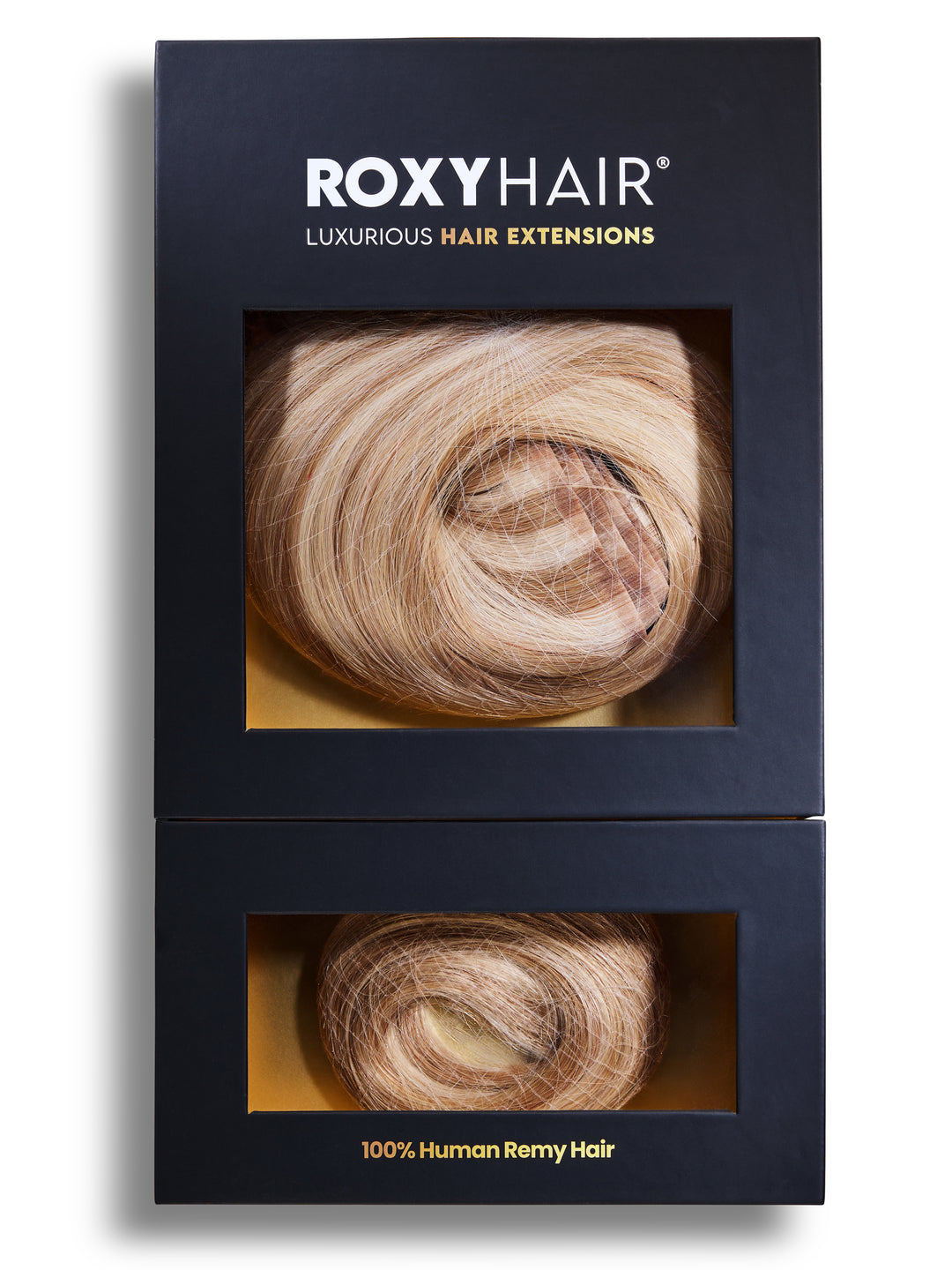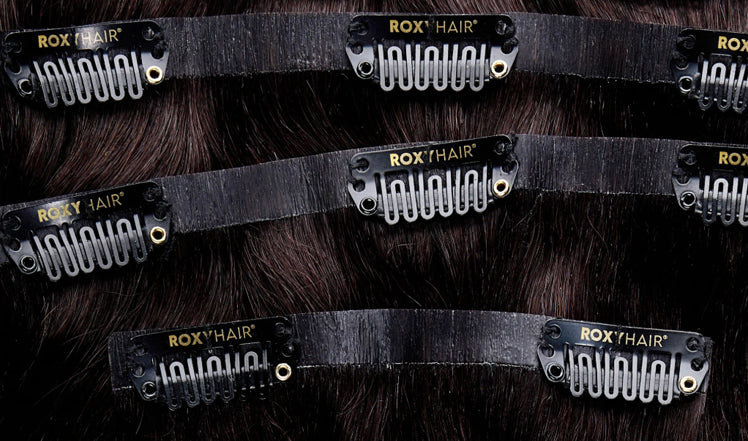Did you know that constantly brushing your hair won't actually make it grow faster? It's true! Brushing simply distributes natural oils and removes loose strands - the growth happens during the hair's 2 to 7 year growth phase.
If you’re wondering ‘do hair extensions stop your hair from growing,’ you can rest easy. Extensions themselves don't affect the hair growth cycle. However, improper application and care can lead to breakage that may seem like stunted growth. In this article, we'll break down the real effects (and non-effects) of extensions on hair growth. We'll also provide tips for safe application and maintenance so your locks can reach their maximum length potential - with or without the added length.
Our goal is to get rid of myths and equip you with the knowledge to make informed decisions, without sacrificing the health and growth of your natural hair. We'll tackle all your questions about extensions and hair growth.
What You’ll Learn:
-
The 3 phases of the hair growth cycle and how genetics primarily control your hair's growth rate
-
Proper application techniques that stylists should follow to prevent damage to natural hair
-
Reasonable expectations for hair growth while wearing extensions, plus tips to optimize growth
-
Common mistakes that can cause extensions to rub, pull and break hair over time
-
A customized hair care routine to nourish the hair & scalp whether wearing extensions or not
-
Clear indicators it may be time to give your hair a break by removing extensions temporarily
-
How to properly remove extensions plus aftercare steps to transition hair back to its natural state
-
Actionable solutions to troubleshoot various issues that may emerge with extensions
The Hair Growth Cycle Explained
Hair growth actually happens in a cycle with three phases - the growth phase (anagen), transition phase (catagen), and resting phase (telogen). Each part of the cycle is important for the health and length of your locks.
-
Anagen Phase
This growth phase lasts 2-7 years. During this long stretch of time, hair follicles are hard at work actively producing new hair cells. This is what determines the rate of growth - generally about a half inch per month. The exact time spent in this phase depends on factors like genetics, hormones, age, and overall health.
-
Catagen Phase
For around 2 weeks, the hair follicle goes into its transition phase, marked by the end of active growth. Basically, the follicle begins to shrink up and detach from its blood supply - signaling it’s taking a break from making new hair.
-
Telogen Phase
Finally, the follicle takes a 3 month long rest. At this point, the strand stops growing and anchors loosely while the follicle lies inactive. Eventually, the hair shreds and falls out so a new hair can begin growing in its place, starting the whole cycle over again.
How Do Hair Extensions Work?
Lots of people use hair extensions to make their hair longer, fuller, or change up the color. Extensions come in different styles that go in your hair different ways too. Some of the main options are:
-
Clip-In Extensions- These are clips with wefts of hair attached to them. You simply snap them into your own hair near the roots when you want them in. This temporary option you can put in and remove yourself whenever.
-
Tape-In Extensions- These also use wefts attached to hair tapes. A stylist sandwiches small sections of your natural hair between two tapes with the extension hair. The tape keeps them more secure than clip-ins, and they can last a few weeks.
-
Bonded Extensions- This method uses keratin glue, beads, or other adhesives to attach individual strands of extension hair to your natural hair. It tends to last longer but can damage natural hair more over time.
-
Sew-In Extensions- Your stylist sews wefts of hair onto small braided rows of your natural hair near the scalp. This gives major length and volume for months but isn't adjustable once sewn in.
-
Fusion Extensions- Similar to bonded extensions, a stylist uses keratin-tipped bonds to attach individual strands to your natural hair - this time using heat instead of glue. These blend seamlessly and last longer too.
When it comes to actually putting them in, clip-ins you can handle yourself easy-peasy by just sectioning and snapping in the hair. But bonded, fusion, tape-in and sew-in extensions require professional application to ensure proper technique.
The Truth About Hair Extensions and Hair Growth
Extensions don't directly speed up or stop hair growth process for thin hair. But they can help or hurt the overall health of thin hair. Good extensions like Foxy Hair® extensions protect from damage. They add fullness so you don't need to style with heat as much which means less breakage for your own natural locks.
Hair extension also shield hair from things like sun, winter winds, chlorine, and pollution. Their weight takes tension off the roots too. That helps prevent thinning and shedding. So used right, extensions optimize growth potential. But bad extensions or a bad install can definitely damage hair over time. Stick to human hair extensions than low quality extensions and a good professional stylist.
Extensions "Damaging" Hair - Myth vs. Fact
The average person has about 100,000 hairs on their head - and many now use hair extensions to change up their hairstyle and look. These extensions let you enhance your appearance. When it comes to hair extensions, there are a lot of myths out there about them wrecking your locks. But the truth is, extensions themselves don't have to damage your strands - it's more about how they are applied and cared for. Let's separate some common fiction from reality when it comes to potential harm.
Myth 1: When you wear hair extensions will thin your hair permanently.
Fact: Correctly installed quality extensions distribute weight evenly and avoid damage. Plus they guard strands from environmental stresses. Some temporary shedding can happen, but your density recovers after removal.
Myth 2: Hair extensions stop your hair being able to grow.
Fact: No matter the extension type - tapes, wefts, etc. - they leave the follicles underneath untouched to keep producing hairs as normal. They are applied near the roots so they can blend as your hair grows out more.
Myth 3: Hair extensions are extremely painful if you have them.
Fact: If extensions are causing notable pain and discomfort, it’s a red flag of improper application or overly tight bonds. Quality extensions should feel lightweight when skillfully applied and maintained.
Myth 4: You can’t style your hair normally with extensions.
Fact: Thanks to added length, thickness and volume, extensions open up more possibilities to finally achieve styles like braids, updos, sleek straight locks and big bouncy curls. Heat tools work the same as well for styling versatility.
Shop Roxy Hair
Caring for Your Natural Hair While Wearing Extensions

Hair extensions, when applied correctly, can serve as a protective shield for your luscious locks underneath when cared for properly. But proper care and certain maintenance is key for keeping wet, tangle-free extensions in top shape and your locks happy and healthy during wear with the proper hair care products.
Gentle Detangling
Aggressive brushing can pull out strands and damage delicate bonds with extensions. Instead, use a wide-tooth comb or specialized loop brush each morning and night. Gently brush wet hair from the bottom up in sections to prevent painful tugs and keep extensions tangle-free.
-
Lather shampoo into your natural roots/scalp area about 2-3 times per week to prevent product buildup.
-
Rinse both natural hair and extensions with cool water to preserve extension bonds during washing.
-
Consider diluting shampoo to make it gentler on wet extensions as needed.
Conditioner should be applied mid-length down the extension hair, avoiding bonding points near the scalp. Use lightweight formulas free of sulfates. This keeps wet extensions smooth and conditioned while protecting the integrity of bonds.
Proper Application Promotes Healthy Hair Growth

While extensions themselves don't directly make hair grow, applying and caring for them properly can promote healthy growth by protecting your natural hair:
-
Well-applied extensions distribute weight evenly, reducing pull on follicles that can cause breakage and slow growth.
-
Extensions act as a shield between your natural hair and heat from styling tools like straighteners or curling irons. This protects your strands from heat damage.
-
With extensions, you may be less likely to use harsh chemical treatments like bleaching or perming that can damage hair and hinder growth.
Removing Extensions Correctly
Taking out hair extensions carefully keeps your real hair healthy for long, fuller, healthy hair growth. Follow these steps to avoid hurting your hair when you remove extensions yourself. But it's best to see a pro, especially for bonded or sewn-in kinds. They know the safest way.

Before you start, get your tools together. You may need a detangling comb, removal solvent, pliers, shampoo, and conditioner for your hair type. Also pick a well-lit, comfortable spot.
Step 1: Use a wide-tooth comb to gently detangle your hair from the bottom up. Avoid pulling on the extensions or your short or long hair.
Step 2: Remove the extensions based on the kind you have:
-
For clip-ins, open the clips and slide them out gently.
-
For tape-ins, apply the removal solvent the brand recommends. Let it sit, then slowly peel the tape off from bottom to top. Hold your hair at the bond with one hand as you remove.
-
For bonded or fusion extensions, see a professional. Don't try removing them yourself.
-
For sewn-in extensions, also see a pro. They'll carefully cut the threads and take them out.
Step 3: Wash and condition your hair well with gentle products. Deep condition for extra moisture after taking extensions out.
More tips: If any step seems hard, see a stylist to prevent damage. Be patient and gentle as you remove them. Avoid harsh chemicals or heat on your hair afterwards when it's more vulnerable.
Boosting Hair Growth with a Healthy Lifestyle

Whether you wear extensions or not, here are some tips and products to help your natural hair grow long and have a healthier hair:
-
Focus on nutrition - eat a balanced diet rich in hair-healthy proteins, vitamins A, B, C, E, iron and zinc. Consulting a doctor or nutritionist can help craft a personalized diet.
-
Do scalp massages 2-3 times per week using gentle circulation-boosting pressure. This nourishes follicles and promote hair growth.
-
Avoid harsh shampoos, excessive heat styling and tight hairstyles that can damage hair. Opt for gentle, sulfate-free shampoos and conditioners for your hair type. Minimize heat tools and use protectant sprays if needed.
-
Get regular trims every 6-8 weeks to remove split ends before they travel up the hair shaft. Trims encourage healthy growth.
-
Manage stress through yoga, meditation or deep breathing - chronic stress contributes to hair loss.
-
Stay hydrated by drinking plenty of water to keep your scalp and hair moisturized.
-
For growth, look for scalp treatments with stimulating ingredients like biotin, minoxidil or rosemary oil. Consult a dermatologist before trying. And fon't forget to use hair masks and deep conditioners with nourishing ingredients to strengthen hair.
Regular Maintenance for Long-Lasting Extensions
Like your natural hair, extensions need regular care and maintenance. Scheduling check-ups with your stylist is key for keeping both your extensions and hair healthy so your extensions stay looking good. How often you need appointments and what's done can vary, so talk to your stylist about a customized plan.
-
Trimming Schedules
It's not just your natural hair that benefits from regular trims - your extensions do too. It's generally recommended to trim extensions every 6-8 weeks, similar to natural hair.
Regular trims keep your extensions looking full, healthy and blended for a better overall look.
-
Extension Adjustments and Removal
Extensions need adjustments over time too. Tape-ins should be replaced or repositioned every 6-8 weeks to maintain the style and prevent damage. Seeing a pro for removal is essential for some types like bonded or sewn-in extensions to avoid breakage.
Regular appointments let a pro properly adjust or take out your extensions when needed, ensuring your natural hair stays healthy underneath.
Signs It's Time to Remove or Replace Your Extensions
Knowing when to take out or swap your hair extensions is key for maintaining the health of your natural hair.
-
If your hair extensions start looking brassy, dull or faded after 6-9 months of wear, the color has likely faded significantly and the hair may be difficult to re-dye.
-
If you notice a significant amount of new growth at your roots causing your extensions to look much longer than intended, it's time to remove them. Leaving extensions in with substantial new growth can start to put strain on your natural hair and cause breakage or thinning hair.
-
Tangled, matted extensions that you can't detangle are another clear sign it's time for removal and replacement. Severely tangled hair extensions can exert excessive tension on hair follicles when worn, potentially compromising hair health over time and contributing to traction alopecia or gradual hair loss.
-
Traction alopecia, a form of hair loss caused by the constant pulling or tension on the hair follicle and root, is a risk with overused or improperly installed hair extensions. Being mindful and replacing extensions at the first signs of tangling or matting can help minimize this risk.
Conclusion
Hair extensions offer an easy way to pump up the volume and length of your locks. The key is choosing high-quality extensions, proper installation, and ongoing care. With some TLC for your natural hair too, you can rock gorgeous extended styles.
Our premium clip-in extensions at Foxy Hair® are made from smooth, tangle-free Remy human hair. They're designed to blend seamlessly with your natural shade and texture. Our lightweight clips allow for easy styling and cause no damage.
With regular maintenance like gentle washing, combing, and trimming, our clip-ins become part of your hair. You’ll get stunning looks that protect and promote your natural hair's health.
Give your strands the length and fullness you desire. Browse our collection of clip-in extensions today!
Frequently Asked Questions
Can your hair still grow with extensions?
Yes, your hair can still grow with extensions as long as you take good care of your natural hair.
Do hair extensions damage hair growth?
No. But hair extensions can damage hair growth if not applied or cared for properly, potentially leading to hair loss and thinning over time.
What are the disadvantages of hair extensions?
Improper installation or maintenance of hair extensions can cause damage to natural hair, including breakage, split ends, and traction alopecia. Additionally, high-quality hair extensions can be expensive and may require ongoing maintenance and replacement.
Why is my hair so thin after extensions?
Hair can become thin after extensions because the weight of the extensions can loosen natural hair shafts from their follicles, leading to hair fall and thinning. Be cautious when using extensions to avoid this issue.
How often should I trim my hair extensions?
You should trim your hair extensions every six to eight weeks.


























